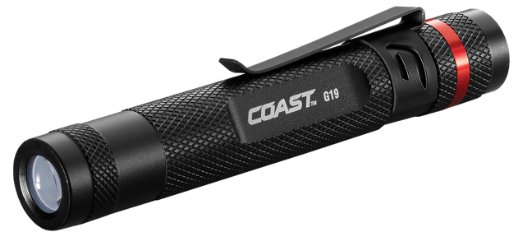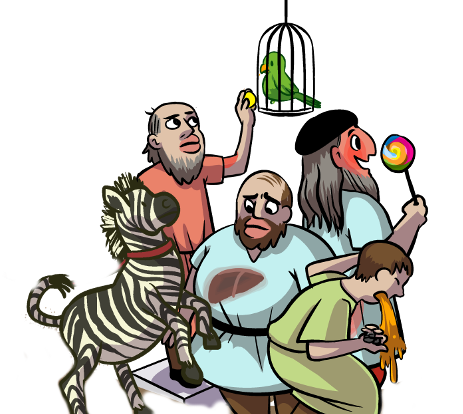How to be a good sub-intern
Be prepared, helpful, and confident in your clinical rotations.
Every rotation
Equipment

- Two pens. Be prepared to give one away.
- Pen light. Small, lightweight, and with a strong focused beam. Useful not just for pupil exams but also examining a patient in a dim room. Don’t fumble around with the flashlight app on your phone.
- Stethoscope. Nearly every specialty will use this except psych. Instead of draping around your neck or tangling in your pocket, get a belt clip to keep it secure and out of the way.
- Notecards. A small stack of blanks in your top pocket that you can whip out to write down anything at a moment’s notice. Often you’re asked on the spot to call a number for a consult; you don’t want to be fumbling for your phone to take down the number. I often have one card per patient to write down details like meds or important H&P details. For ICU rotations and more complicated patients, you may need larger blank paper or scutsheets, but still keep some notecards handy for little things.
- Insoles. You’re on your feet for hours on end, and those hospital floors are hard. You can join the cool kids and get some Dansko’s, but a far cheaper option is a simple gel insole in your existing shoes. While Dansko’s are great for standing, people tell me they stink for regular walking. I far prefer the insole because the Dansko’s look ridiculous with anything other than scrubs, and even then they look a bit odd…
-
Rubber gloves. Always carry 1-2 pairs in your pocket. I often find myself in a situation requiring gloves but none are nearby.
Surgery likely doesn’t need your stethoscope. Psych probably doesn’t need anything beyond pens; leave your tie and white coat at home so a patient doesn’t strangle you or get intimidated. An ophthalmoscope is handy on consult services where you’re unlikely to have tools handy.
UpToDate. Graduate from Wikipedia to UpToDate.com. This is the most well-organized resource I’ve found for efficient, practical, and comprehensive research on topics encountered in clinical medicine. Hopefully your school provides you with a subscription.
Set some goals. Before you hit the floors on day #1, come up with a list of 2-3 things you want to get better at on this rotation. For example, if you’re interested in cardiology, you can always say you want to get better at listening to hearts whether it’s a pediatrics or adult medicine. Having a ready answer shows you’re a self starter, and it primes you to get more out of the opportunities that come up.
Have the calendar in your head. Someone is invariably going to ask you how long you’re rotating with them, or what you’re doing next. Replying “I don’t know” makes you look aimless. Know your dates. What’s more, I like to solicit feedback at the halfway point so I have room to improve on anything attendings note. The day before the halfway point, I’ll mention to the attending that I’d appreciate if there was an opportunity for some feedback the next day.
Get comfortable with chaos
No longer are you lumped in with hundreds of other students all going through lectures and exercises in lock step. You’ll often be adrift, alone on a ward somewhere. For much of this year you’ll spend your time wondering if you’re where you’re supposed to be. The second half of medical school is much less organized than the first half.
Get used to messing up on your first swing. You’ll daily feel fumbling and incompetent. The important thing is that you learn quickly. Attendings and residents expect that you’ll fumble the first day or so, but if you’re making the same mistakes day after day, expect low ratings.
Prioritize your time. You no longer have infinite time to study at your own pace. You must now more than ever prioritize what to cover and how deeply to cover it.
Know your nurses. For each patient, introduce yourself to his or her nurse. If they carry a ward cellphone, write down that number. A quick phone call can save you lots of walking. Go one step further and write down the number to the patient’s bedside for quick questions and updates. Obviously not all patients will be able to pick up the phone, but for some it is efficient.
Morning rounds
The List. Every morning, print a fresh copy of your team’s patient list. As your team goes around, you’ll build a todo list of things that need to be done for each patient: consults to call, records to request, lab values to hunt down, etc. It’s a given you do everything you can for your patient, but for other patients without a medical student helping, step in and offer to help. To do this, you need to make note of todo items on patients that aren’t even yours.
Examining patients
Always introduce yourself. For inpatients, introduce yourself again each day until it’s clear they know you. Address them as Mr X or Mrs Y, and only use first names if they insist. Always knock before entering. Recognize that patients have lost control or privacy, so knocking and requesting to enter is one way to give some of that back. When leaving the room, repeat your name again so you’re not just some random “doctor” coming to examine them; I’ve found that this in particular makes you memorable.
Minimal exposure. While you need to examine head to toe, you don’t have to expose them all at once. Keep as much covered as possible as you’re going along.
Think about why they’re here. What organ systems are the most important to report on? What are complications to keep an eye on? What other medical conditions do they have that you need to watch out for? If someone has myasthenia gravis and just had anesthesia, are they feeling weak?
Presenting on rounds
Gather the information. Before diving into the digital records, ask the night staff if there were any updates. I tend to check the medical records before examining the patient; this might provide overnight clues that will guide my physical exam. Sometimes you might want to briefly glance at the patient to get basic vitals and then come back later for a thorough exam. When examining a patient in the wee hours of the morning, be nice: use your penlight as much as possible instead of flipping on the overhead lights.
Put together the story. Use only 50% of the data, but be prepared if asked about the other 50%. Giving 100% of the details in an unorganized fashion forces the attending to work at making sense of the situation. Don’t fall into the trap of being proud of yourself that you were able to spew out all kinds of detailed data rapid fire. Better to tell a logical story at normal rate. Figure out what you think is most likely and tailor the story to that. List other possibilities and what you’re doing to rule them out.
H&P versus SOAP. On inpatient services, you present new patients differently than ones that have been on your service a night or two. New patients need a full H&P that includes the history of how they got to your service so everyone’s on the same page (eg. emergency department course). From the second day onward, you report using a SOAP note only highlighting overnight events, new lab values, and plan changes.
